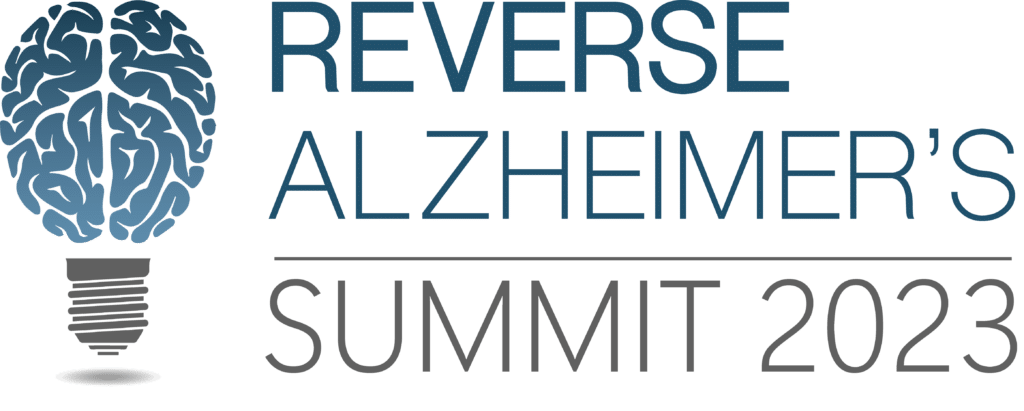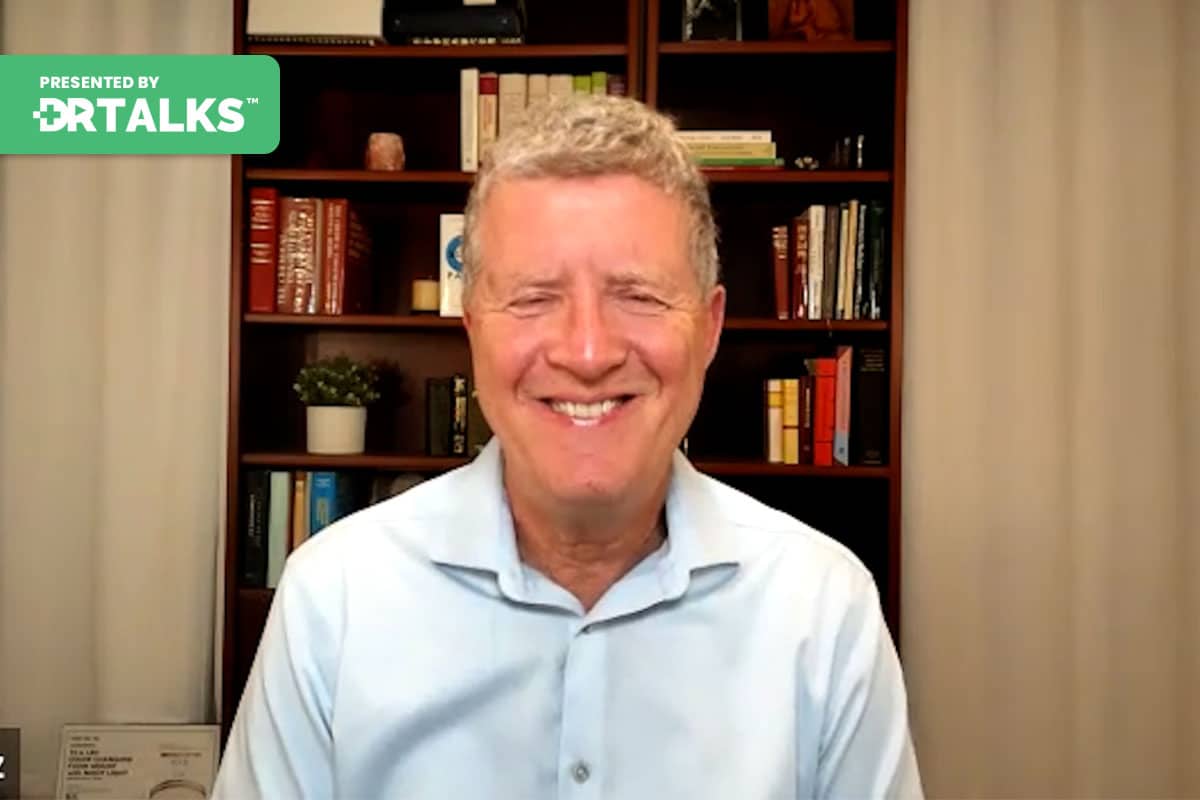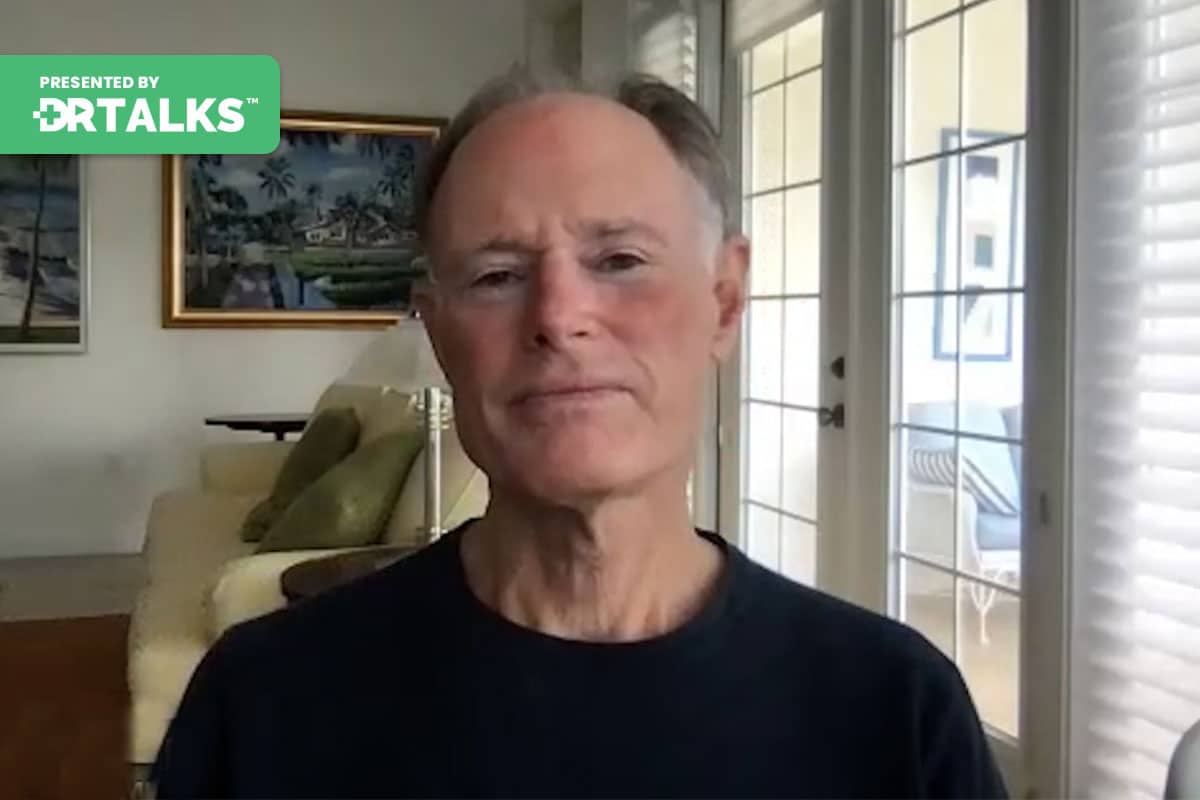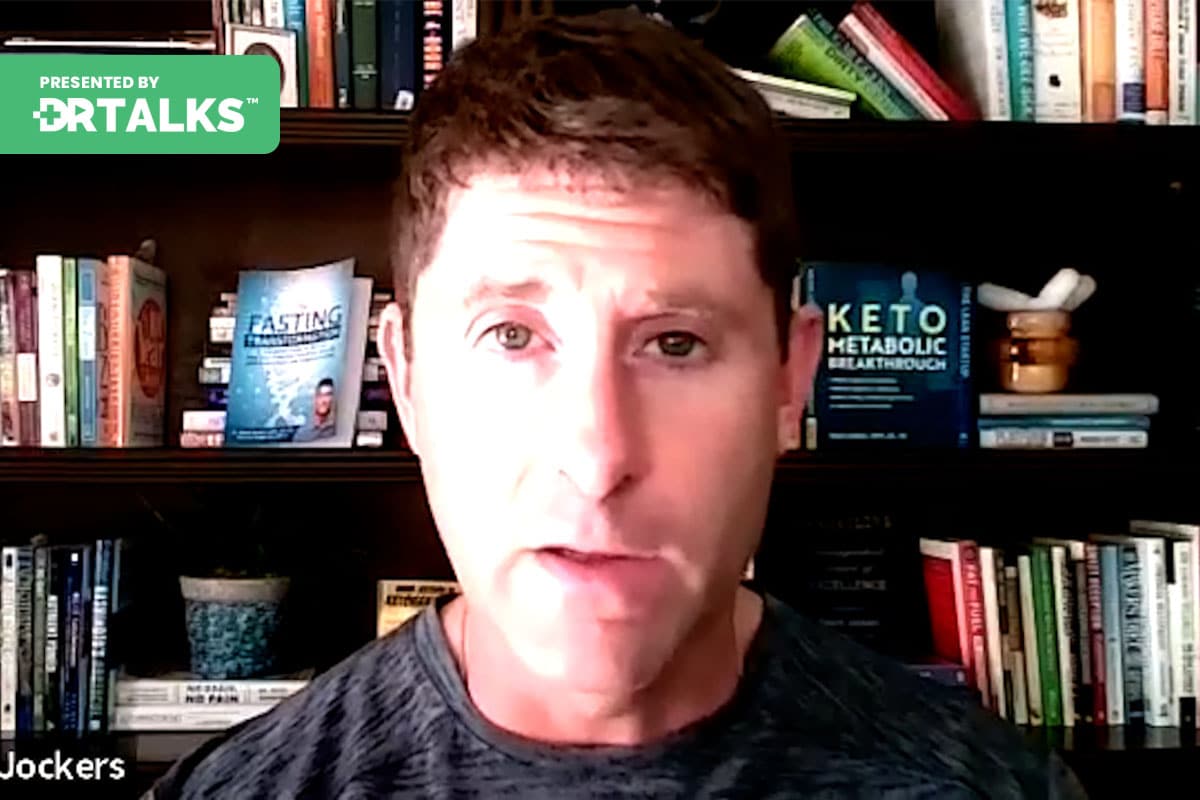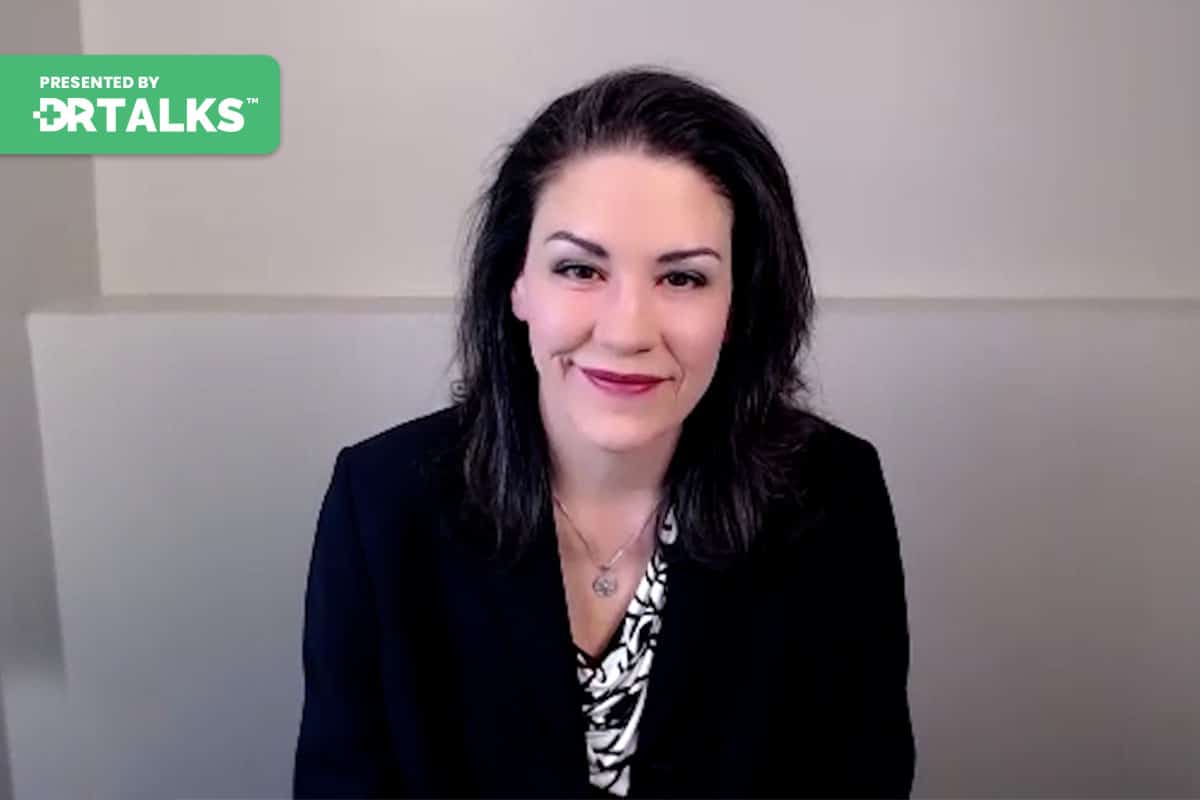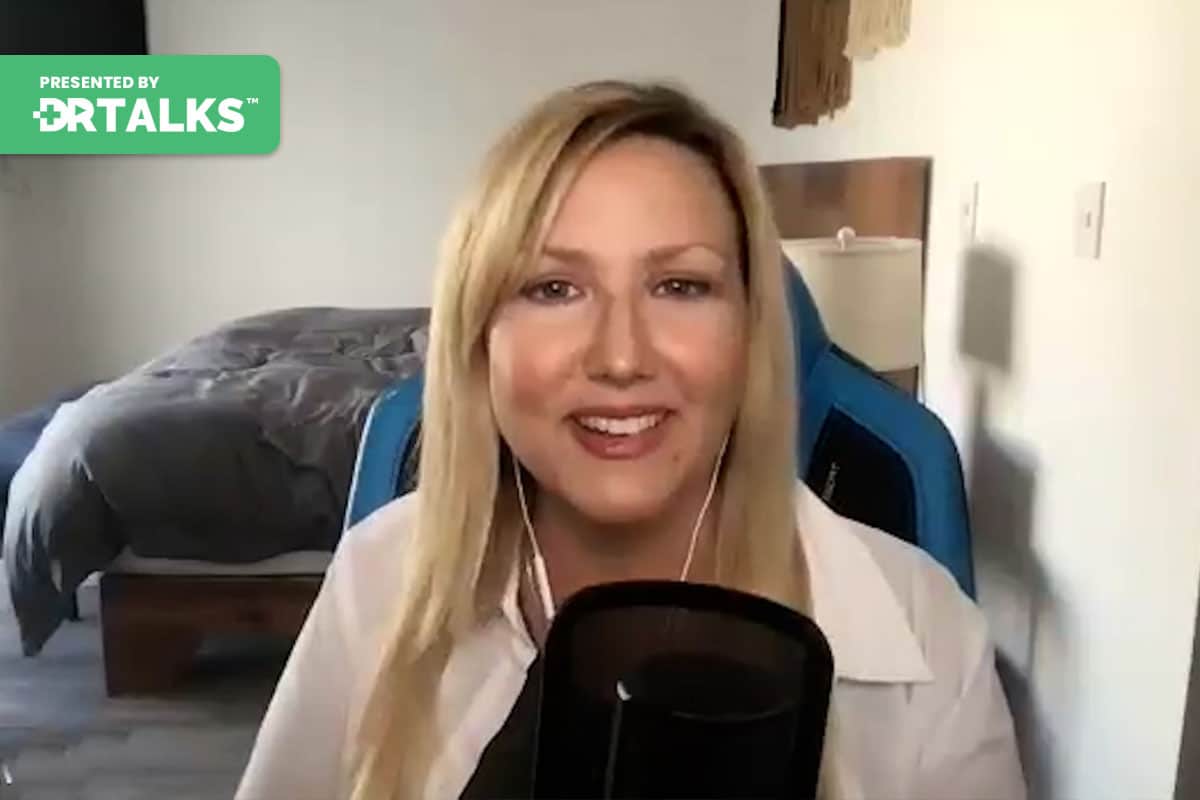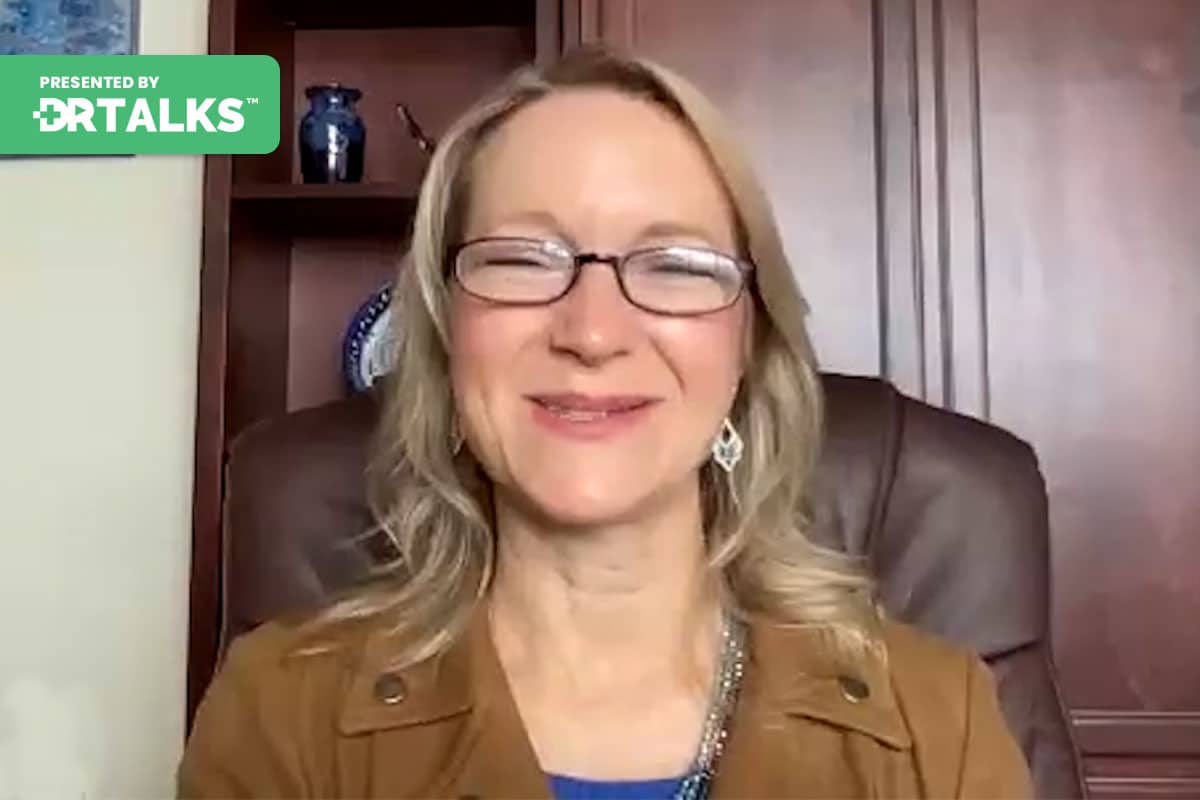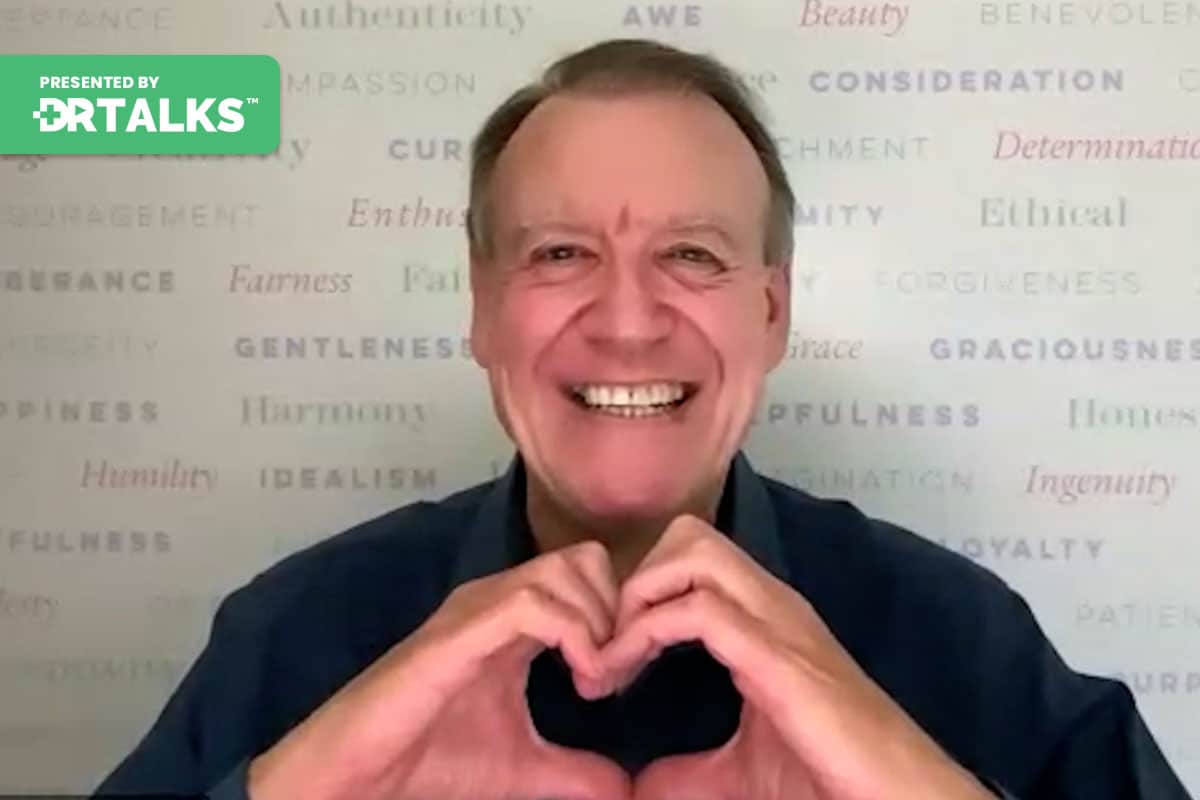Join the discussion below

Dr. Heather Sandison is the founder of Solcere Health Clinic and Marama, the first residential care facility for the elderly of its kind. At Solcere, Dr. Sandison and her team of doctors and health coaches focus primarily on supporting patients looking to optimize cognitive function, prevent mental decline, and reverse... Read More
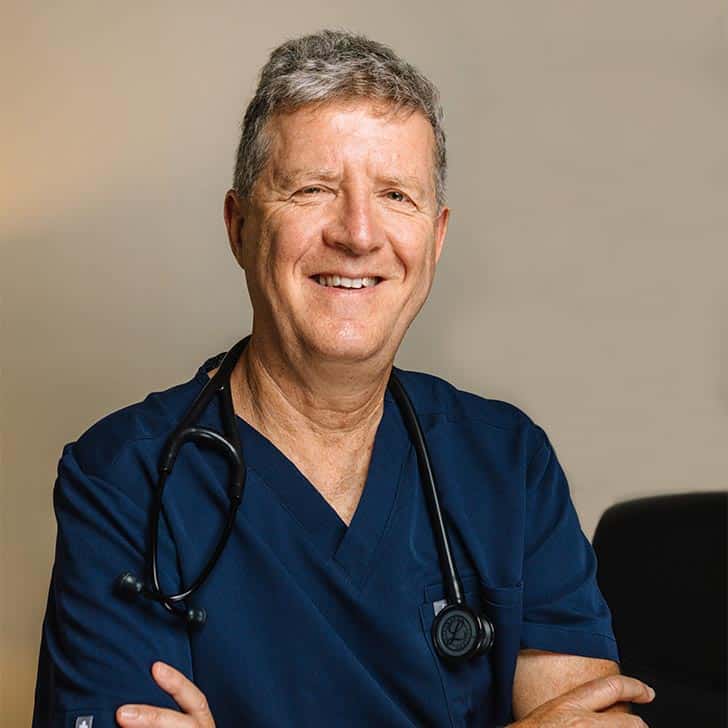
Isaac Eliaz, MD, MS, LAc has been a pioneer in the field of integrative medicine since the early 1980s, with a focus on cancer, immune health, detoxification and mind-body medicine. He is a respected formulator, clinician, researcher, author and educator, and a life-long student and practitioner of Buddhist meditation. With... Read More
Dr. Isaac Eliaz describes the role of The Survival Paradox on neuroinflammation and neurodegeneration
- Learn about detoxification and how to eliminate the traces of injury and toxicity that lead to neuroinflammation
- Understand the heart-brain connection and its role in neuroinflammation
Related Topics
Aging, Alzheimers, Brain, Brain Health, Inflammation, Neurodegeneration, Neuroinflammation, ToxinsHeather Sandison, ND
Welcome to this episode of the Reverse Alzheimer’s Summit. I’m your host, Dr. Heather Sandison, and I’m bringing back a dear friend this year, Dr. Isaac Eliaz. He’s a leading expert in the field of integrative medicine, and he specializes in cancer, but also has a lot to share when it comes to detoxification and Alzheimer’s, immunity, and other complex conditions. He’s a respected physician, researcher, bestselling author, educator, and mind-body practitioner as well. Dr. Eliaz partners with leading research institutions, including Harvard and the NIH, Columbia, as well as many others. He’s co authored studies on integrative therapies for cancer, heavy metal toxicity and other toxins. He’s the founder and medical director of Amitabha Medical Clinic in Santa Rosa, California, where he has pioneered the use of therapeutic apheresis as an adjunctive blood filtration treatment for detox and chronic degenerative conditions like Alzheimer’s. Dr. Eliaz, welcome.
Isaac Eliaz, MD, MS, LAc
Thank you. Thank you so much for having me back. I loved our discussion and I am looking forward to sharing some updates today.
Heather Sandison, ND
It is such a privilege, always, to get to chat with you and to catch up. Last year when we chatted, you had a brand new bestselling book out, The Survival Paradox, and so I want to revisit some of the concepts that you presented in this book, because it is really a paradigm shift from the way we have thought about things previously. So, what exactly is the survival paradox and how does it relate to brain health?
Isaac Eliaz, MD, MS, LAc
The survival paradox is a new paradigm that explains our health and our aging in our life in a deep way. We are all aware of the role of inflammation in practically every disease but inflammation is really not the cause. Inflammation is a result and what drives inflammation is the survival paradox. So we ask, “why is it a paradox?” Because we are wired to survive and every cell in our body is wired to survive but it is part of our survival mechanism. When it is threatened, we respond either by fighting or by running away and these basic movements are devastating for our body. So because it is innate in us, naturally and logically, it is automatic and it is practically immediate. It is instantaneous. So, the system responsible for this is the autonomic nervous system, the sympathetic nervous system that responds with fighting, and with our freezing and running away, which really equates to isolation, to creating boundaries that drives many diseases, including the Alzheimer’s plaque, which is really in isolation, a fixation in a place where it is not supposed to be.
So, in this sense, once the autonomic nervous system triggers, once we have this survival threat, the biochemical system is right behind by activating alarming survival proteins in the queue. I have been researching for almost 30 years and made some of the most important discoveries in blocking it. It can attenuate inflammation and fibrosis in Galectin-3. We will talk about it a little bit later but in the context of the nervous system, the survival paradox also triggers a hormonal change naturally, right? I mean, if adrenaline, epinephrine, norepinephrine goes up, glucagon also goes up. Insulin is the response, cortisol goes up. Now the whole system is being compromised, but also neurotransmitters and there are endocrine aspects. So this is known. But I want to take a bit of a deeper look in and really look at what is the meaning of the relationship between the survival paradox in our brain. So our brain and our heart, which really has its own brain, people are not aware, govern our being. We want to do something. Right now we are talking, so we have a thought, we are thinking about it and we are verbalizing and we are also creating a movement. It all starts in the brain. Hopefully it starts in the heart, but for most people it starts in this part of the brain.
The hard brain connections are really inseparable, but it is, maybe we touch it. It is beyond this discussion because it is extremely sensitive and it will respond immediately and powerfully, which means that small changes in the brain will have devastating effects metabolically, endocrinology, circulatory immunologically, and effects within the immune system of the brain, within the inflammatory system of the brain. This is why it is so important to recognize it and whatever tools that are going to help us to mitigate this response will help our general health and will help dementia. Brain health and Alzheimer’s are really inseparable. The idea that, unfortunately, that conventional medicine is looking for a magical bullet that will block a protein, I do not believe in. It is almost an insulting misunderstanding, not to say about the fortune that has been and is being spent on it. Simple diet will get the same results as some of these drugs. So in this sense, it is just important to understand that this survival response puts our brain under crisis and when we are in crisis, the deterioration, the degeneration, the aging, the wear and tear on the brain is much, much greater and the reason why you and I are bringing it up, because there is something to do about it, otherwise we would not be talking about it right now.
Heather Sandison, ND
It is so empowering, in fact, right? This inflammation, this inflammatory process, this is there to protect us. It happens for a reason. It is when it gets out of control or when we adopt a lifestyle that continually triggers that inflammatory response that we get into trouble. So in your book, you talk about the role of neuroinflammation and cognitive illness, can you explain this process of neuroinflammation and how it directly leads to cognitive decline? Then what we can get, like you said, I want to get into what we can do about it. So let’s set up how it happens and then let’s talk about it.
Isaac Eliaz, MD, MS, LAc
Yeah, of course. I do not want to skip on what to do about it too quickly because understanding it gives power because there is something we can do about it. So, we look at inflammation as a protective mechanism in general and so is the same immune system in the body with the immune system that protects us. We are all acquainted with the cytokine storm and the damage it caused from COVID and the narrow inflammation, and narrow damage it causes for so many people. So in this sense, we have the macrophages, which are the immune cells that are in charge for the body cleanup, for killing invaders, but mainly for the cleanup. They will turn a non-inflammatory area into an inflammatory very quickly with the mitigation of this survival protein, Galectin-3, that we will talk about. So, in the brain we have a similar process, the cells that help to build the structure, the cleanup of the brain that many years ago we thought were not important. Now we know how extremely important the microglia are in relation to the astrocytes and the brain because the body is so smart. The fact that we can talk with 50 trillion cells, each of them is one million reactions a second is a miracle by itself.
But the brain has multiple protective systems. For example, the brain will always get glucose in other organs, which could be compromised first because it needs nourishment. It can also function and alternate fuels very easily because it has to keep functioning and as such, here it is a gatekeeper called the blood brain barrier. So large molecules, heavy metals, toxins that are not supposed to penetrate into the brain but when this gets disrupted for multiple reasons that we will discuss a little bit later on, because each of them is a solution. So much of your work on the consistent change in lifestyle, in diet, and habits because it starts to reverse it because it is almost like going to a mountain and trying to take you down with a brush slowly and then you do not feel different after one day, but suddenly, you see a difference. So, the blood brain barrier get disrupted. It gets disrupted by the survival response, Galectin-3 disrupts the blood brain barrier. It gets disrupted by stress. It gets disrupted by toxins of different kinds, glyphosate being a leading one, and now we have things that are not supposed to get into the brain, coming in to the brain. We also have signals coming to the brain that are because of emotional toxicity, psychological toxicity, epigenetically triggered toxicity.
Within the brain, with this amazing part of the brain, there is an interest in psychedelics and reemergence of meditation. I’m a meditation guy, I have never tried psychedelics but I have spent decades meditating for extended periods of time every year on my own. Now we start to understand that the relationship between the inhibitory parts of the brain that keeps us together but also inhibits us, creates restraints, creates isolation, limits us in the amazing connectivity that the brain has. So the brain, without going into the anatomy, has parts that are suitable for time of relaxation, where we can develop our executive plans and executive power, where we can see into the future without being threatened that somebody is going to eat us alive in a few minutes, and we have the more animalistic survival parts that are very triggered easily. So, when we are in a time of stress of survival and we have a near inflammatory response, the survival of the brain turns on and this is what starts. This is like turning the field on fire instead of watering it.
The microglia signals it, but too many things will trigger it. I will go over it in a few minutes, hopefully, because we have to address each of these to get a profound effect on dementia, on memory decline in Alzheimer’s and within it, we have to remember in the autonomic nervous system that is a sympathetic, activated part where the fighting equates to inflammation, and the flight equates to fibrosis through hardening and dysfunction of the tissue. We have to understand that it is balanced by the parasympathetic system. We take a deep breath, we relax, especially if it is not a chronic sympathetic flow, we see a difference, but the basis of this is that the body is dynamic. We know now that brain cells regenerate even when we are old, which means that anything and everything is possible. For something to change, what created the situation has to change. You cannot ask something to change if we do not change our habits, our diet, our exercise regime, our sleep regime, and our view on life and within it, there are a lot of things that can assist us. This is why brain health is a dynamic process that can be influenced. And this is why this summit is so important, because there is really not one person that is not affected by this.
Heather Sandison, ND
Right. I know the more of this work I do, the more people I talk to, the more people I run into who are suffering or who know someone suffering, supporting someone who is suffering, and as a caregiver, sacrificing and going through the heartache and stress of the process. Toxins are a big piece of the puzzle when it comes to dementia and this is what I love about toxins, not that I love much about them, but it is a solvable problem. If we know that they are there, we can eliminate the exposure and there are great binders like the one that you have created, Pectasol-c and others. I was so excited when you came out with the glyphosate one because I see really high levels of glyphosate in my patients and sometimes you cannot figure out where they are being exposed. I want to dive into connecting some of these dots, how, specifically, are these toxic to the brain? A little bit about the blood brain barrier and absolutely, we need to talk about solutions.
Isaac Eliaz, MD, MS, LAc
Right. I would love to talk about that. I want to take a small step and lay out the multifactorial factors of Alzheimer’s and dementia. Then I want to bring the toxins and today I will share for the first time, because I just got the result, the initial study on GlyphoDetox, we now have a larger group and it is mind blowing except for one outlier. Everybody’s glyphosate is being reduced dramatically.
This was something which was a crusade of mine. I actually found a solution to remove glyphosate. While this is going to change many people’s lives, now we actually have the data we are collecting. We will probably publish online in six to 12 months, but we have our larger group coming in and it is truly amazing.
Heather Sandison, ND
That is so exciting. I wanted to share that we had one really sad case of dementia, who I was caring for, and he stabilized for a long time. Cognitively, he got better quite a bit. He had very high levels of glyphosate. We had no idea where he was being exposed. They were not in an HOA where they were spraying and they were eating 100% organic. He was drinking water that was very clean. He was getting the mountain valley water, but his kidney function was deteriorating very quickly and that is how he ended up dying, was a victim of kidney failure and his glyphosate was stubbornly high. I think that part of it was going on, not only were his kidneys not able to detoxify it, even though we were giving him some binders, maybe we did not have the tools that are quite specific to glyphosate. I can only imagine that this was a big part of why he had cognitive decline.
Isaac Eliaz, MD, MS, LAc
It is interesting. It is not off topic because in Chinese medicine, the brain tissue is controlled by the kidney. What is interesting is the connection, the ancient wisdom knew. Glyphosate in addition to its damage in the brain it will cover soon. It is one of its major effects, that is not known, is it increases chronic kidney disease and kidney failure. It is a major driver and l will definitely talk about it, I will share a story. It happened to me last week on a personal level and about the misunderstanding. If we really look at why Alzheimer’s and dementia are so prevalent, and part of it is that also our connection to the Earth, our connection to nourishment on all levels is weak. It is part of the Eart being weak but from an energetic point of view, our required responses in life, the time response is really shortened In the past we would write a letter to somebody, we will see them in two weeks or we will make a phone call later. Now, if we do not answer a text in 10 seconds, something is wrong, right? They will send you another.
This very fast response is putting a lot of burden on the computer or the nervous system. The system is bombarded. EMF for example, all kinds of radiation that we are exposed to, magnetic, non-magnetic. Magnetic, estimated is, compared to 100 years ago is ten to the 15th power greater. Million is six. Billion is nine. Trillion is 12 zeros. It is trillion times but it is an infinite number. This body has to really hold it and as such we are adopting and Alzheimer’s is really the victim because a key metabolic component we have to look at, Alzheimer’s is a metabolic disease, not exclusively, but driving it just like cancer is a metabolic disease. I would say immunity is only part of it and the reason is the metabolism is shifting to a survival mode. We know, you know, I know. Shifting to a survival mode means glycolysis. Even if there is oxygen in the area, which means no oxygen to the tissue means hypoxia, just like I talked earlier, right? The smallest changes, the brain goes crazy. You do not give oxygen to the brain, and I will talk about it in a moment, major chain. What we need to see is what drives this metabolic chain and what drives it in circulatory problems, hypoxia. Circulatory, is not only a stroke, circulatory is that for a short period of time we do not get enough blood that our neck is blocked.
Heather Sandison, ND
Sleep apnea.
Isaac Eliaz, MD, MS, LAc
Yeah, sleep apnea, etc. and what happens the more minute we have hypoxia, microglia freak out and start causing damage. This is driven by Galectin-3, a study published late last year showed it. It is called Perfusion Injury Reperfusion. You stop the circulation and you turn it on. Happens a lot and I’m doing a lot of work with it in extreme conditions like sepsis and even an AIDS grant for studying this with removal of Galectin-3 through apheresis but putting it aside, that happens with the brain response through Galectin-3, and it causes an inflammatory response that ends up causing fibrosis and tissue that is not functioning anymore in the brain and when we introduce MCP, we reverse the process, which means blocking Galectin-3 reverses the process.
Heather Sandison, ND
MCP being modified citrus pectin, which is a binder. I put it in that category of binder, something that is going to bind on to, I almost think of it like a catcher’s mitt. It is going to get that toxin and take it out of the body.
Isaac Eliaz, MD, MS, LAc
So, that is one part. The other part is it blocks Galectin-3. Even more important the reason why it is a binder, but it is much more than a binder, it blocks the driving force for the inappropriate survival response, but a lot of things can help with circulation. So this is one code. But remember, when circulation is problematic, you have acute and chronic inflammation. Then we’ve got oxidative stress already, oxidative stress for so many reasons, but it is really part of our inappropriate metabolism. No matter why, right? On the cellular and mitochondrial level so much of your work, you want to try to balance the mitochondrial function. Then suddenly, the brain gets better, diabetes gets better, kidney gets better. I mean, chronic kidney disease is a reversible condition and I know it from my medical practice. Almost always.
Heather Sandison, ND
Same. Yeah. I have seen it, too.
Isaac Eliaz, MD, MS, LAc
Then you get the contributing factor and that is where you get to toxicity. Heavy metals, mycotoxins, pesticides are huge. We know there is documentation on heavy metals in the brand name. Of course aluminum is well known, but lead and mercury, there is documentation about mycotoxins damaging the brain and there is extensive documentation of pesticides, and pesticides is huge because of glyphosate. We were programmed to accept that we can be poisoned at low levels. Every person has glyphosate in their blood. You just mentioned this person. What is amazing about this person who said they may have not had the genetic epigenetic predisposition, they may have lived a healthy lifestyle. Their damage to the brain, the intoxication of the brain was because of a chemical that they had no control over. Now here is an interesting story. I just came from a week; I was away and I was staying in a place and I was just going to ask the people maintaining this area, make sure they are not using glyphosate. My God, I can see that the trees have been sprayed.
I think the day I arrived they were yellow, and within three or four days there, the weed was so dead. Heather, you could not see it. Then I see the gardening committee walking by. I told them, “Hey guys, can I ask you a question? Are you using glyphosate?” “No, we don’t use glyphosate. We use something safe. We use something called Cheetah, glufosinate.” Well, glufosinate is useful with glyphosate resistance. Glufosinate blocks glutamine synthesis, it basically shuts down the mitochondria. A dog will eat the smallest amount and will be dead, so directly toxic to humans. But these people are being fed that it is a healthy solution for glyphosate. It is already banned in 29 countries and it is newer. This is what is happening and we constantly have to fight Big Agra and basically, you know what? These trees, you have to take out the weeds twice a year. It is almost the same and the person who was spraying, yeah, it is more work to do it manually but it is healthier. They are probably getting poisoned because they are a minority worker. They do not have the right mask, they do not know what is happening to them. So, here is an example and it keeps on always the same story. We have to be aware of it and we have to do something about it.
So, we have this toxicity and then we have the emotional, psychological toxicity, including multigenerational epigenetic toxicity. In this sense, now we can get to the toxin and what toxins do. Listing glyphosate as an example, but remember it is a mixture. Because if you have glyphosate and you get elevated Galectin-3 and you have some other issues, they disrupt the blood brain barrier. The moment they disrupt the blood brain barrier, they allow molecules that are not supposed to get into the brain to get into the brain. Remember, for us, when a molecule gets from the gut to the bloodstream. Gut-brain connection, it is not an arbitrary. Gut, we get the response of the macrophage, the cleaners of the immune system, it signals to the microglia that something is wrong. In the brain, we get the microglia. They are like brothers and sisters in different ways. Now you have the blood brain barrier disrupted, leaky brain, luckily it is a good term, leaky brain. I know that people use it. I think we should call it a leaky brain just like the gut.. Then you got your heavy metal coming in and you have an immune reaction. Immune recreation equates to inflammation, equates to tissue, and then you have things like glyphosate disrupting neurotransmitter glycine. The glyphosateis very similar to a new inhibitory neuroprotective neurotransmitters. You have glyphosate, which is now excitingly interesting. Glyphosate will block the conversion of glutamate to glutamine into GABA naturally. So, you get glutamate toxicity, a great pair to have. Collect your glyphosate and now add another one from another angle and that is why you get so much damage. So we have to detoxify them. In this sense because glyphosate affects us at all levels — on the level of our water, level of our plants and meat, and level of our soil. Then we also look for solutions from the same kingdom. So I will not go into detail, but glyphodetox, I have spent a few years developing it. When I realized about four years ago, “Wow, I think you have overlooked morbidities”. Now in this video, the initial five patient clinical pilot, all of them had low significant lowering of life with it in the urine. Now we finished with 13 or 14, and only in one of them, there was not a significant reduction. All of them are moving to normal to lower level, especially the ones who have very high level toxicity. Just imagine this for yourself.
Heather Sandison, ND
I mean, it is really incredible. I have been asking for years. Why is there no specific glyphosate binder? Because it is so ubiquitous and I see in my patients with ALS and Parkinson’s and Alzheimer’s, some of the more severe cases of neurodegeneration that glyphosate level is so high. The scale that I use is supposed to be undetectable, under 0.038 on the tests that I run. The people I see with severe and/or neurodegenerative disease are often six, seven, eight now when I test my own.
Isaac Eliaz, MD, MS, LAc
They are literally 200 fold.
Heather Sandison, ND
If not, maybe more, right? Because when I test my own, it is usually under one. So it is not at zero. I eat exclusively organic and I run through airports and sometimes I’m having to grab something. But for the most part, I aim to eat exclusively organic and I’m not in, what I see some people are in an HOA and their animals are walking around and then they track the glyphosate inside, and somebody spraying the sidewalk so that the weeds do not grow and all that is coming in the house and it does not rain in your house. It does not wash it away so it gets stuck in the carpet. It gets stuck on the rugs, get stuck in the house, then when you take your shoes off, you are absorbing it, right?
Isaac Eliaz, MD, MS, LAc
Exactly. Yeah. It is not only that, the water soluble, then you get the lipid, there like dozens of pesticide. Glyphosate is one of them. We look at the list, the other ones that are in pretty impressive quantity. As people may not realize it is one pound a person a year is being sprayed, 330 million pounds and like you said, it is literally insane and because it is water soluble you get rain, it will flow miles and miles into the water table. So yeah, it is a real problem, but it is important. For example, in glyphodetox, it also has the ability to bind mycotoxins because of the formulations but it is also delivering very essential minerals because there are some living parts in it. But pectasol offers another layer because it is also, of course, the great binder, especially of heavy metals, positively charged, well documented, published, but also because of the Galectin-3. It attenuates the inflammatory response and what we are seeing, and a lot of it people from your previous summit, they are using it long enough. We are getting remarkable benefits on transformation of the mental function. Remarkable.
Heather Sandison, ND
Fantastic. That is why we are here.
Isaac Eliaz, MD, MS, LAc
Yeah, and things take time, like you said, not only for this, in general, it takes time. You cannot just eat yourself healthy. You have to remove them because we cannot avoid them.
Heather Sandison, ND
You cannot. That is what we see is that you do not want to just dip your toe in the water and take one new supplement. You want to change your diet and change your sleep patterns and change your exercise patterns and really optimize all of these different facets of what can potentially put you at risk for developing dementia, the hormone signaling, and the nutrients, and all of it. The more of it you can do, the better the outcomes are and the higher my confidence is that somebody is going to get better. So this is really exciting that we have these phenomenal binders, but also kind of this new signaling that is going to reduce that Galectin-3 burden or response. So, do you have other other strategies for reversing Alzheimer’s or what do you think is kind of paramount in your mind? Where do you start?
Isaac Eliaz, MD, MS, LAc
I think that lifestyle is the basis of your work, it is essential. We have to change the lifestyle because we have to change the metabolism. One part that it starts with the simple things like diet, exercise, adequate sleep, stress relief. That is not straightforward, simple, inexpensive to do and hard to do to keep, of course, right? Blocking Galectin-3 is essential. The more you know, it is interesting . I just saw two patients who came to me for another reason that they treated for cancer, one of the metastatic that is not supposed to go away and they came to me after a decade for other reasons.
Heather Sandison, ND
Oh, how wonderful.
Isaac Eliaz, MD, MS, LAc
And I look at the program a decade ago and I did not have pectasol on, because I did not realize then, once they finish their cancer, it was not the first, I did not realize about all the other benefit. These things I discovered in the last decade, a lot of them. It is one part, we have to regulate and harmonize the metabolic function, including intracellularly. We want to use compounds that will affect us intracellularly, if it is berberine, for some people even metformin, if it is curcumin, if it is en honochule, the king of intracellular harmonizer because it penetrates the blood brain barrier. Also, we are getting great feedback. We also have to address pesticides, but there are deeper ways for us to shift from a survival driven reactivity, which is ego driven, which is thinking driven, which is habit driven, and move from the brain to the heart. Because, as I mentioned, every cell in our body wants to survive. It likes to take nourishment and it throws away what it does not want. It naturally reacts to things it does not want. That is a survival response. The only organ that function differently is the heart.
The heart takes all the dirty blood from everybody. It accepts it. If it does not accept it, you will be dead right now. The survival of the heart is acceptance, it is not reactivity. That is the moment we go into this mode. Our cells function different in the electromagnetic field of the heart, which is 100 times bigger than the brain. The side effects affect every cell in our body, affects our community, affects people around us. In fact, at some level it keeps going even if you cannot measure it, it keeps going. It is a wave. In this sense, when we can shift into this place and that is where meditation becomes very powerful; we know people who meditate the silk injury are preserving the brain proportional to: one, how much a day they meditate, two, how many years they have been meditating, and three, how well trained they are on meditation. The UCLA did a lot of studies with imaging on it, and it is remarkable, which means you can preserve your brain, you can preserve your function, and all of us experience when we get stressed, our memory declines. When we relax, our memory gets better. We cannot control outer circumstances but we can control our response to circumstances. In this sense, addressing the topic which I’ve addressed for many years, but I talk about more in the last year, is the relationship between trauma, nerve degeneration and nerve inflammation and trauma and diseases is a key component that is part of the healing from dementia.
Heather Sandison, ND
Yeah. I love this because my two main goals were to talk to you about detox and that heart-brain connection. I think of you as an expert, certainly in both of those things and this whole conversation around trauma and healing from trauma, I think a lot of people think, “oh, early childhood trauma, did my parents get divorced or was somebody an alcoholic or was I abused or neglected?” Yet sometimes just navigating the health care system is a trauma in and of itself and so many people are not validated, so few people are given hope, especially when you are seeing a neurologist regarding Alzheimer’s. So, I wonder if you have suggestions for how to navigate that and how to make sure that is not affecting us in an unhealthy way that is going to drive the process of neuroinflammation.
Isaac Eliaz, MD, MS, LAc
Right. It is a great question and it is such a profound topic. It is something that I do not only work on one on one, but when I do meditation and healing retreats, which in the last decade I have done in person, mainly in Israel twice a year, but I’m going to start doing it in the United States. I have to make a commitment. So you get many people with severe PTSD. From the army, people who have been disconnected with their hearts or people with terrible personal stories, people who come to the retreat and their partner after 30 years with hidden and feelings, left them with their children and gone, and they are just crying but they decide to come, and five days later, you do not recognize the person, they have healed, they have accepted. How can it happen? So let’s look at it for a second a little bit deeper. What is really trauma in a deeper way? There are two processes that basically we can experience to the extreme, not easy to experience. The first one, which is a complete letting go. Complete letting go, which means everything we experience, every thought that arises, every feeling, everything that come into us, sensation from the outside we experience inside, it expresses itself and it falls away without leaving a trace.
The Buddhist metaphor is like a bird flying in the sky. It leaves the sky in the sky, the sky in the sea, or like writing in water; but usually things leave a trace. So when we are very young and we have not had a lot of experiences in this life, when something happened, like we get a cut, it repairs without a scar, right? Without a trace. But slowly we have experiences that start leaving traces and experiences repeat themselves. So we get the same trace in the same place until the body knows it. When there is an action, I’m going to have this reaction and that is how we create habits. We no longer respond based on the moment, which means that in the future we will respond based on what happens to us. What we do now is relative to what we did in the past. You call it karma, you call it epigenetic, you call it habit, it does not matter. It affects us and what it does neurologically, it triggers a neurological response because we recreate our memories every time it triggers alerts systems. Now if two people have an experience, one’s, “oh my God, I was in bliss”, and the other said, “I was devastated”. How is it possible? Well, it is based on their habits. Part of the healing of the trauma is to try to clean these traces so toxins will create these traces.
Everything we talked about pesticides, heavy metals like mycotoxins. What are mycotoxins? if you ever saw mycotoxins, they do not grow in the sun in dry, windy weather. They grow in dark, damp areas, stagnant segments that lack oxygen, right? In our basement and in our sinuses inward, we do not have good circulation, right? So of course, they are going to affect closed areas that we do not have good circulation. As we start to understand it, we want to see how we can repair. On a physical level, for example, neural therapy that injects protein into the skull, it is amazing. You inject protein into a skull, I use some homeopathic and it is smaller by 10% and then by 60, 70%. When you get to 40 years old, it will get smaller, but whatever gets smaller never comes back. How is it possible? I’m not the only one who does it. I have done hundreds, probably thousands, of these. How do they happen? Because we are numbing the memory of the brain for 45 minutes, that is all. We are numbing the signals that tells you that something is wrong and the body gets to recalibrate.
The same thing has to happen with trauma in the context of neuro inflammation. When you integrate everything we have talked about, we use meditation with this simple first grade meditation and mindfulness, which is very popular, which is — just slow down, and create this space. When we create a space and slow down, there is more room for repair and slowly as we develop on the path of meditation to more sophisticated and developed methods, we are able to develop the quality of acceptance and of letting go. Then when we let go, let’s go to the brain. I want people to imagine this: when you get a neurological input and you have to respond to the input into another 50 trillion other inputs, because we are talking in trillions, probably in trillion trillions, right? There are so many things over our lifetimes, our sister’s life, epigenetics, it is tough to get it right but if now we are responding to the one thing and the congestion is down, everything becomes clearer. People who meditate say, “I see things clearer”. Clearer thinking, clearer cognitive function is exactly the opposite of what happened with dementia when being slow to think and too annoying to recall and to put things together.
Heather Sandison, ND
Lots of confusion.
Isaac Eliaz, MD, MS, LAc
Exactly.
Heather Sandison, ND
Overwhelmed.
Isaac Eliaz, MD, MS, LAc
This is a power and as we first create a space and then when we move to our heart, then the whole pressure from the head goes away. I have trained in it for decades, so it is not all the time, but usually when I talk, I speak and I think from here, I do not feel it here. You actually feel it here. There is nothing exclusive for me. It took a long time because a lot of habits I had to wipe out. But I was stubborn enough to go to the mountains, month after month. Some people, it is easier for them, but that is part of the healing. We get access to a fresher brain that is moving all the time. The heart always moves, the brain always stops and analyzes. It is hard to create a flow in a system that is all the time suspicious and analyzing. It is much easier to create the flow in a system that is built to take all our difficulties, our dirty blood, connect with the universe through the breath, and give us nourishment, love and compassion. A system that nourishes itself only after it finishes its work, totally selfless. That is what the heart is, the heart nourishes itself only after it pumps the blood out.
After it gives, it relaxes and the coronary artery fill in but the first organ that get nourished by the heart anatomically is the heart itself. It is self-love is part of loving others. When we get this, when they struggle, when the defense goes down, when there is more interconnectivity, a sense of community, right? Your work is so big about creating community, right? Well, we have a community between the heart and the body, 50 trillion cells of community between the body and the 100 million, 100 trillion trillion organism in our gut. Now, it is to no surprise that when we disrupt the gut microbiome, the brain goes wacko, right? There is no surprise. So logical, right? We discovered that in 30 years as well, it is ancient wisdom because the gut-brain connection is the principle of connectivity. In the connectivity we see that the blood giving nourishment with good quality nutrients and good clean up. And there is a connectivity on the level of energy, the electromagnetic field of how that affects cell and then there is connectivity in the level of intension and the intention is hard. It is hard for us when we have something that gets us upset to create a response of compassion, to turn from reactivity to responsiveness. As they say in Los Angeles, fake it until you make it, so you have to produce it until suddenly something happens and you are not reacting. Because when we react with anger and we all do, I do, I assume you do, as everybody does. It does not feel good then it is not good for our liver and it is definitely not good for our brain, right? We can see it this way.
Heather Sandison, ND
There is the wonderful story of someone who had an audience with the Dalai Lama. He was in a big mess. It must have been some sort of gathering decades ago and he had a chance to ask a question. So he asked the Lama, “how can I be as compassionate as you are?” and the Dalai Lama’s response was, “act as if you are”, and it is the “fake it till you make it” but by the Dalai Lama.
Isaac Eliaz, MD, MS, LAc
There is a great a psychotherapist who worked to transform anger and he felt he did a great job. He said he shook the Dalai Lama’s hand, then said the transformation he had, he realized, “oh my God, 30 years of work and one handshake did a bigger effect”. That is the power. We all have this power. We all have our belief system. We all have this divine quality within us. There is Judeo-Christian. We are made in the image of God. If it is Buddhism. It does not matter what it is, it is in us. It is really our journey in life and that there is a maintenance brain and then all this inner connectivity, right? That is why I mentioned the psychedelics because we get connected to this other realm that meditation connects you naturally without substance. Then there is a hard brain and there is an area of brain cells in the heart. It allows us to use our cells in in a bigger way. The more we connect to it, the more our brain gets revitalized and that is why you can see people who work very hard and actually they are in great shape and the brain functions amazingly awesome, how come? Because they are doing something that they love, they feel like they are giving. So really, it is as Dalain Lama said, to be selfless is a very good thing from a selfish point of view.
Heather Sandison, ND
That is great. Oh, Dr. Eliaz, it is always a pleasure. I feel so inspired by you and just also calmer and clearer being in your presence, even remotely. It is just an absolute privilege to have you involved in the summit, to have you here today, to share your wisdom and experience with us. Thank you so much.
Isaac Eliaz, MD, MS, LAc
Thank you. Thank you.
Heather Sandison, ND
Please tell everyone where they can find out more about you and about ecoNugenics and the products we discussed.
Isaac Eliaz, MD, MS, LAc
They can go to DrEliaz.com, DRELIAZ.com or .org. And I have a newsletter that is very informative and I will start teaching retreats in the second part of this year.
Heather Sandison, ND
So fantastic. I’m going to sign up. I will be there.
Isaac Eliaz, MD, MS, LAc
It is after decades and decades of training and refinement. That is one thing and people can go to pectasol.com or econugenics.com and find out about glyphodetox en honochule, which I mentioned. I look forward to being in touch with many people.
Heather Sandison, ND
Thank you so much for your time.
Isaac Eliaz, MD, MS, LAc
Thank you. Thank you.
Downloads
